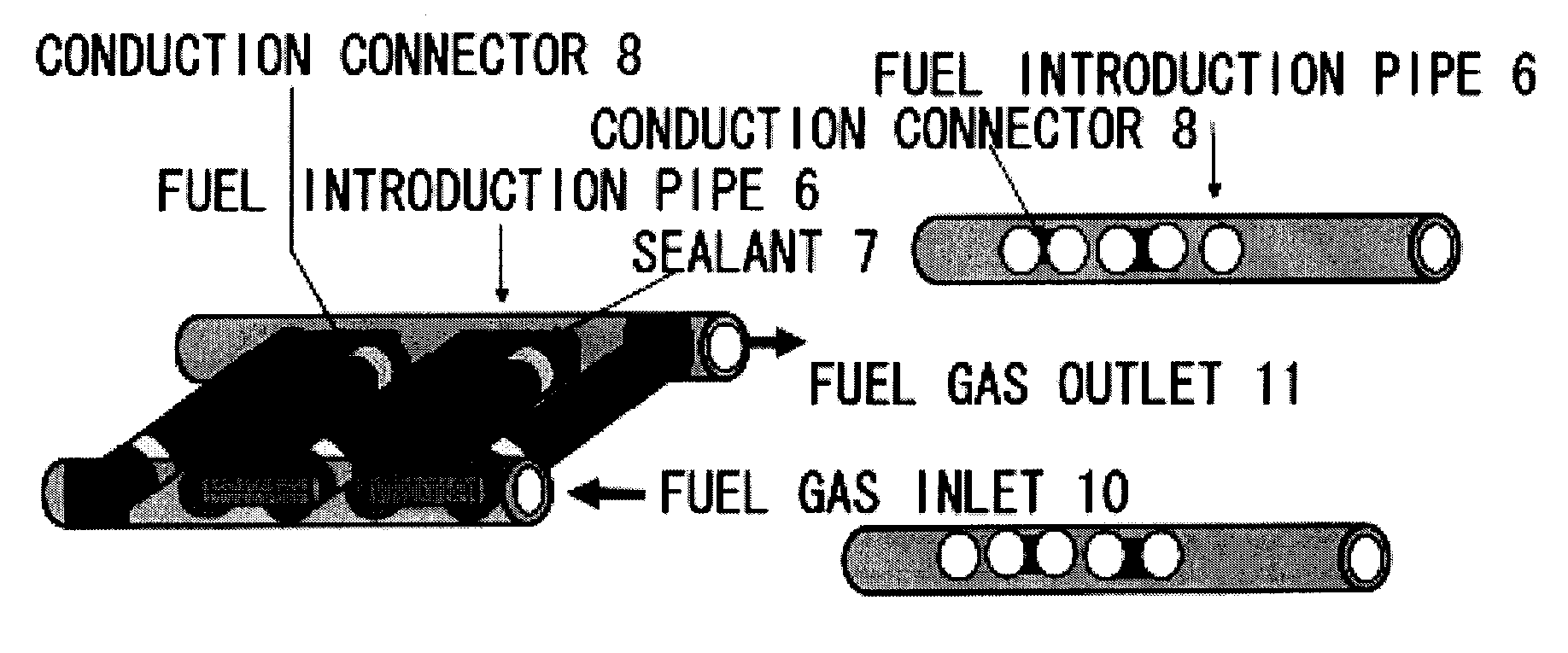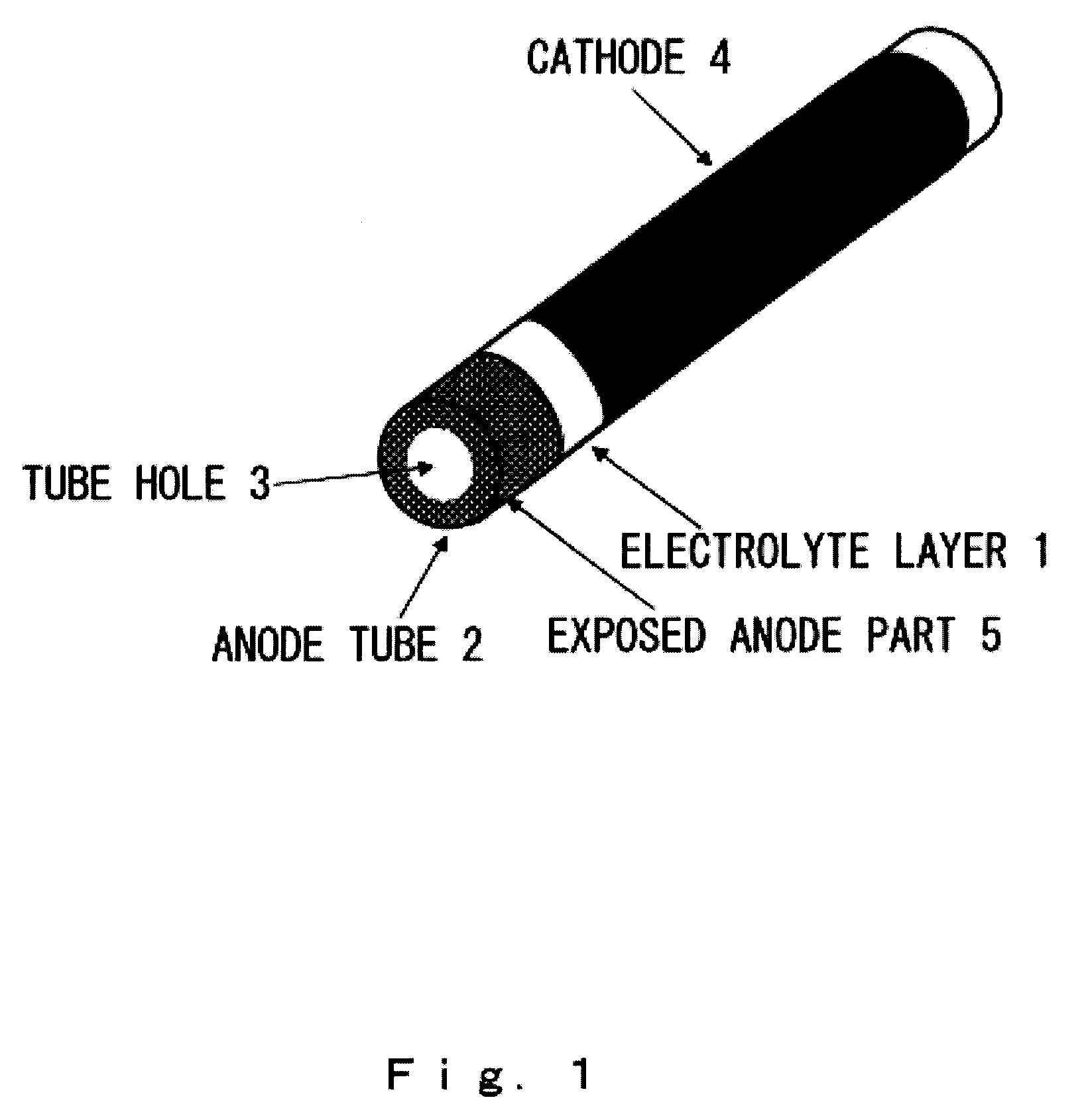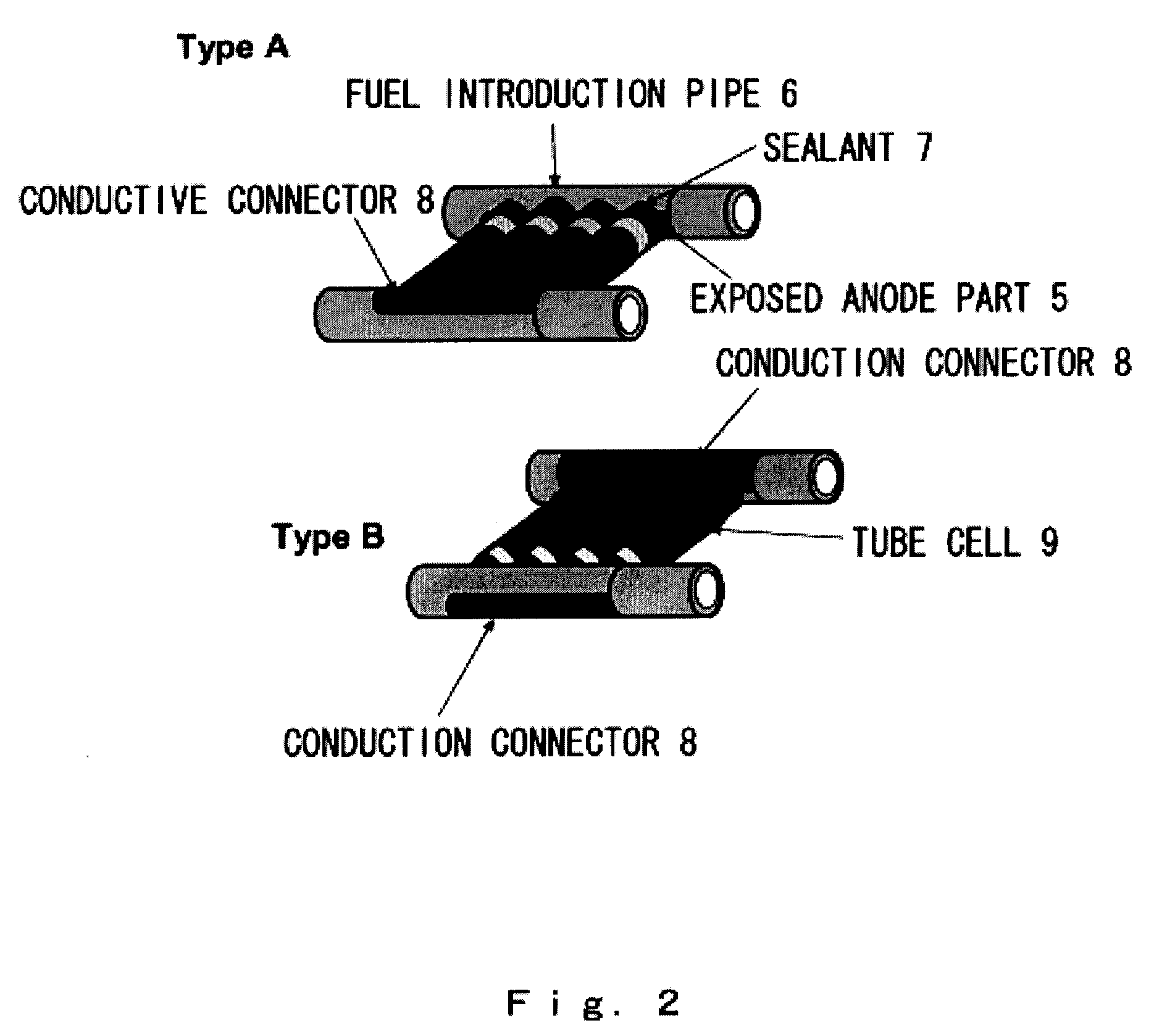Manifold and stack of electrochemical reactor cells, and electrochemical reactor system composed of these components
a technology of electrochemical reactor and stack, which is applied in the field of manifold and stack of electrochemical reactor cells, and the electrochemical reactor system composed of these components, can solve the problems of difficult to decrease the thickness and increase the porosity of flat types, prone to cell failure, and cell deformation, so as to reduce the tube size and the thickness of electrolyte, and increase the surface area. , the effect of reducing the operating temperatur
- Summary
- Abstract
- Description
- Claims
- Application Information
AI Technical Summary
Benefits of technology
Problems solved by technology
Method used
Image
Examples
example 1
[0103]In this example, a tube-type electrochemical reactor cell was prepared by the following procedures (see FIG. 6). First, nitrocellulose was added as a binder to NiO (Wako) and a powder having a CeO2-10 mol % Gd2O3 (GDC) composition (Anan Kasei), and this was kneaded with water to a clay consistency and formed into a tube-shaped molded body (anode tube) by extrusion molding. The resulting tube-shaped molded body had a diameter of 2 mm and a tube thickness of 0.5 mm (outer diameter 2 mm, bore 1 mm).
[0104]Next, the opening at one end of the resulting tube-shaped molded body was sealed with vinyl acetate, and this tube was dipped in slurry comprising a solid electrolyte with a GDC composition to dip coat it with an electrolyte layer-forming layer and obtain an electrolyte-coated molded tube. 5 mm at the other end of the porous anode tube was left bare, forming the exposed anode part.
[0105]Next, this molded tube was dried and baked for 6 hours at 1450° C. to obtain an electrolyte-co...
example 2
[0106]The tube cells obtained in Example 1 were arranged in parallel and connected to a gas introduction pipe (fuel introduction pipe) (FIG. 12). The connections were sealed with glass paste to fix the tube-type cells to the gas introduction pipe. Electrodes for current collection were attached by applying silver paste to the gas introduction pipe and the tube cell ends. The two units in FIG. 12 each have conductive connectors attached symmetrically, thus allowing easy serial connection between these units when they are superimposed as shown in FIG. 13.
example 3
[0107]The tube cells obtained in Example 1 were connected to a gas introduction pipe with adjacent cells reversed (FIG. 14). The connections were sealed with glass paste to fix the tube-type cells to the gas introduction pipe. The tubes could then be serially connected by applying silver paste to the gas introduction pipe and tube cell ends in order to electrically connect adjacent tubes to one another. FIG. 14 shows a stack of four serially connected tube cells. 3.6 to 4 V of electrical output can be obtained with these four tube cells.
[0108]Embodiments of the present invention were explained in detail above, but the present invention is not limited to these embodiments, and various modifications are possible to the extent that the intent of the invention is not violated. For example, in these embodiments the examples all involve single units or stacks, but the same procedures could be followed to construct a structure of superimposed stacks.
PUM
 Login to View More
Login to View More Abstract
Description
Claims
Application Information
 Login to View More
Login to View More - R&D
- Intellectual Property
- Life Sciences
- Materials
- Tech Scout
- Unparalleled Data Quality
- Higher Quality Content
- 60% Fewer Hallucinations
Browse by: Latest US Patents, China's latest patents, Technical Efficacy Thesaurus, Application Domain, Technology Topic, Popular Technical Reports.
© 2025 PatSnap. All rights reserved.Legal|Privacy policy|Modern Slavery Act Transparency Statement|Sitemap|About US| Contact US: help@patsnap.com



